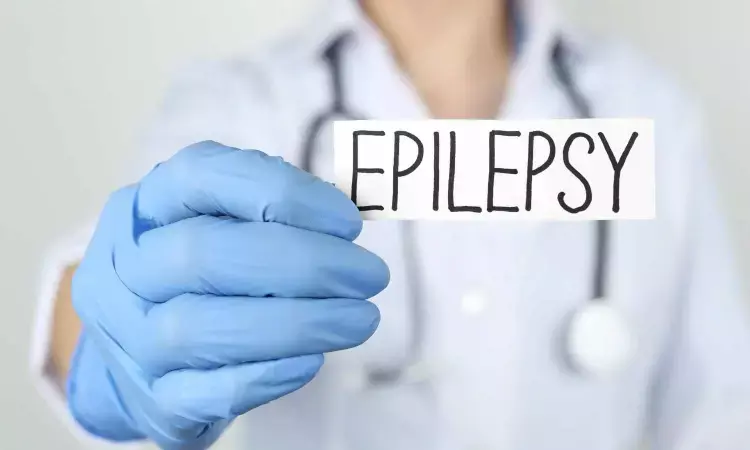- Home
- Medical news & Guidelines
- Anesthesiology
- Cardiology and CTVS
- Critical Care
- Dentistry
- Dermatology
- Diabetes and Endocrinology
- ENT
- Gastroenterology
- Medicine
- Nephrology
- Neurology
- Obstretics-Gynaecology
- Oncology
- Ophthalmology
- Orthopaedics
- Pediatrics-Neonatology
- Psychiatry
- Pulmonology
- Radiology
- Surgery
- Urology
- Laboratory Medicine
- Diet
- Nursing
- Paramedical
- Physiotherapy
- Health news
- Fact Check
- Bone Health Fact Check
- Brain Health Fact Check
- Cancer Related Fact Check
- Child Care Fact Check
- Dental and oral health fact check
- Diabetes and metabolic health fact check
- Diet and Nutrition Fact Check
- Eye and ENT Care Fact Check
- Fitness fact check
- Gut health fact check
- Heart health fact check
- Kidney health fact check
- Medical education fact check
- Men's health fact check
- Respiratory fact check
- Skin and hair care fact check
- Vaccine and Immunization fact check
- Women's health fact check
- AYUSH
- State News
- Andaman and Nicobar Islands
- Andhra Pradesh
- Arunachal Pradesh
- Assam
- Bihar
- Chandigarh
- Chattisgarh
- Dadra and Nagar Haveli
- Daman and Diu
- Delhi
- Goa
- Gujarat
- Haryana
- Himachal Pradesh
- Jammu & Kashmir
- Jharkhand
- Karnataka
- Kerala
- Ladakh
- Lakshadweep
- Madhya Pradesh
- Maharashtra
- Manipur
- Meghalaya
- Mizoram
- Nagaland
- Odisha
- Puducherry
- Punjab
- Rajasthan
- Sikkim
- Tamil Nadu
- Telangana
- Tripura
- Uttar Pradesh
- Uttrakhand
- West Bengal
- Medical Education
- Industry
Children with drug-resistant epilepsy treated with cranial surgery have higher long-term survival: Lancet

USA: Children with drug-resistant epilepsy (DRE) who underwent vagus nerve stimulation (VNS) or cranial epilepsy surgery had the highest survival rate beyond ten years, a large, retrospective study has shown. The study appeared in The Lancet Child and Adolescent Health on June 02, 2023.
In contrast, the survival rate beyond ten years in children with drug-resistant epilepsy was lowest when treated only with antiseizure medications. Results show that the risk of early death was reduced by over 80 percent after surgery and 40 percent after vagus nerve stimulation, compared to medication-only treatment.
This large, retrospective study was the first to compare long-term survival in children with DRE among cohorts treated with medications only, vagus nerve stimulation plus medications, and cranial epilepsy surgery plus medications.
People with epilepsy have increased mortality rates compared to the age-matched population. Epilepsy is one of the most common neurological conditions, affecting at least 3.4 million people in the United States. Among children with epilepsy, an estimated 20 percent have DRE.
“We provide critical evidence for healthcare decision-making for pediatric patients with drug-resistant epilepsy,” said senior author Sandi Lam, MD, Division Head of Neurosurgery at Ann & Robert H. Lurie Children’s Hospital of Chicago and Professor of Neurological Surgery at Northwestern University Feinberg School of Medicine. “Our findings also highlight the importance of the multidisciplinary team approach to the treatment of epilepsy, such as that offered at a comprehensive epilepsy center, which includes tailored evaluation and deployment of medical and surgical treatment options for patients with this challenging disease.”
However, fewer than 1 percent of patients of all ages with DRE are referred to comprehensive epilepsy centers. An estimated 100,000-200,000 people for whom epilepsy surgery is indicated do not receive it, according to the Center for Disease Control and Prevention (CDC) and Institute of Medicine.
“In light of our study's findings, the catastrophic underutilization of epilepsy surgery may directly lead to avoidable premature deaths in pediatric epilepsy patients each year,” said Dr. Lam. “Epilepsy surgery is established as a safe and effective treatment, even in infants younger than 3 months of age. We need to improve early referral for comprehensive epilepsy evaluation to limit the harmful effects of ongoing seizures in the developing brain and to decrease the time to surgery. We show that children’s lives may depend on it.”
Dr. Lam and colleagues also found disparities in access to epilepsy surgery. White, privately insured children were more likely to receive surgical treatment.
“Our finding of disparities in access to epilepsy surgery needs to be explored further to identify multifactorial reasons and aim to improve healthcare delivery and health equity in the treatment of pediatric epilepsy,” said Dr. Lam.
The study included 18,292 pediatric patients (0-17 years of age) with DRE. Data were obtained from the Children’s Hospital Association’s Pediatric Health Information System (PHIS). This administrative database contains inpatient, emergency department, ambulatory, and observation encounter level data from 44 children’s hospitals in the United States.
“Children with drug-resistant epilepsy should undergo evaluation for all treatment options, with increased consideration of candidacy for cranial epilepsy surgery or neurostimulation such as vagus nerve stimulation,” stressed Dr. Lam, who also holds the Yeager Professorship in Pediatric Neurosurgery.
Reference:
Comparison of long-term survival with continued medical therapy, vagus nerve stimulation, and cranial epilepsy surgery in paediatric patients with drug-resistant epilepsy in the USA: an observational cohort study, Lu Zhang, Matt Hall, Prof Sandi K Lam, Published:June 02, 2023DOI:https://doi.org/10.1016/S2352-4642(23)00082-2.
Dr Kamal Kant Kohli-MBBS, DTCD- a chest specialist with more than 30 years of practice and a flair for writing clinical articles, Dr Kamal Kant Kohli joined Medical Dialogues as a Chief Editor of Medical News. Besides writing articles, as an editor, he proofreads and verifies all the medical content published on Medical Dialogues including those coming from journals, studies,medical conferences,guidelines etc. Email: drkohli@medicaldialogues.in. Contact no. 011-43720751


